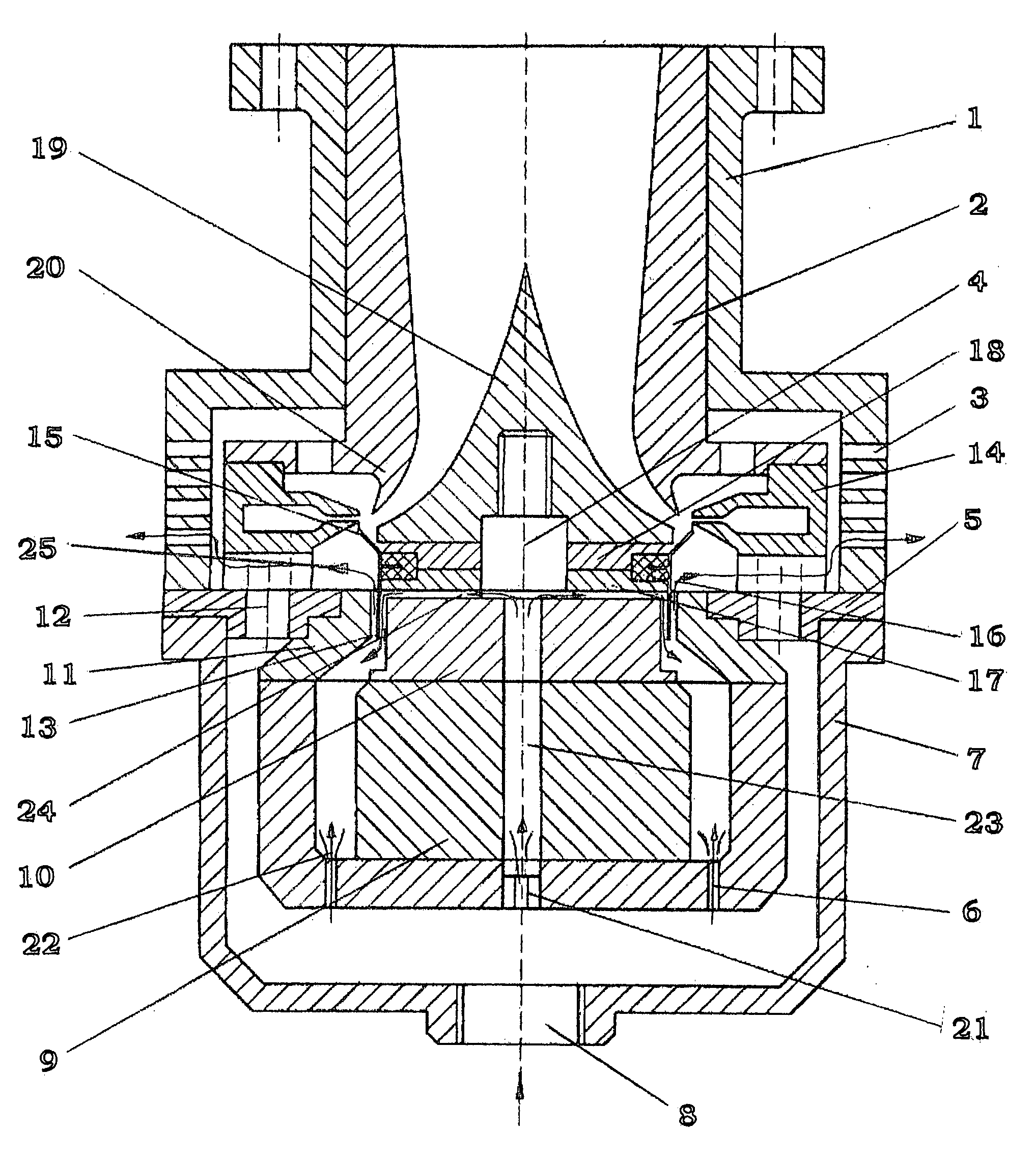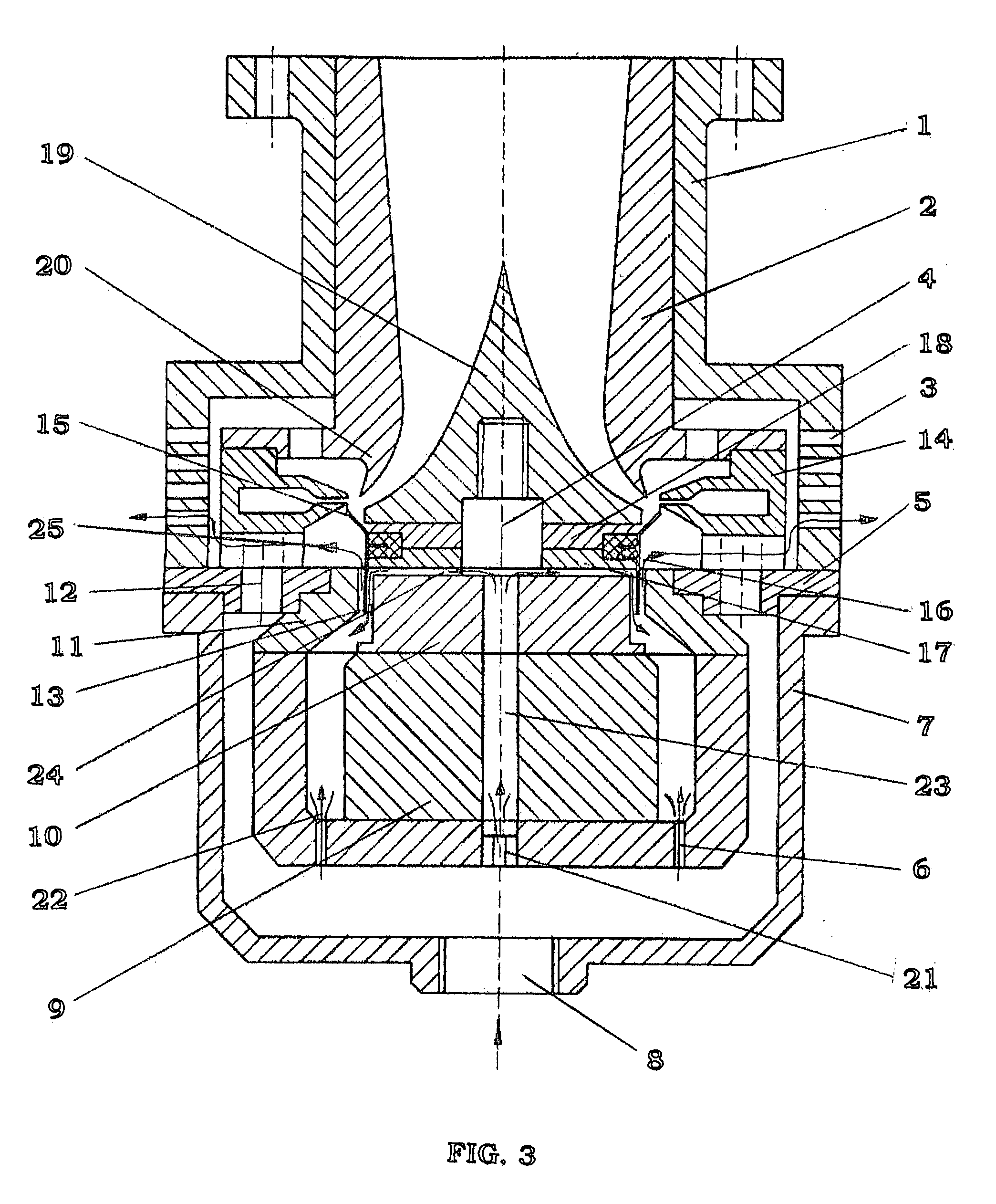These loudspeakers have wide range of frequency, so they can clearly broadcast various audio signals, but their single-unit acoustic power is limited.
When broadcasting in greater power is needed, it is usually necessary to combine a plurality of loudspeakers; even so, it is still not possible to meet the requirements of large area, long distance or high sound-intensity broadcasting.
But the frequency range of a pneumatic loudspeaker is narrow and can hardly be over 2,500 Hz, so its sound definition is bad.
At a distant location, as HF components attenuate more, definition is low and it is hard for a listener to hear clearly.
Thus, it has difficulty in being used for large-area, long-distance or high sound-intensity broadcasting.
And, to effectively modulate an airstream, it is necessary to operate under the state of big amplitude, and the present pneumatic loudspeakers cannot work for a long time without failure; so it is hard for them to be used in audio broadcasting of high sound-intensity.
The movable ring 33 of this loudspeaker is arranged on the outside of the still ring, so an airstream pushes the movable ring 33 towards the still ring 32; in addition, since the gap between the movable and still rings is very small, the area of contact is big, although the amount of air to be consumed is reduced; thus, a relatively strong frictional force is generated, which tends to result in damage or blockage.
1) The loudspeaker modulates the direction of a jet by obstructing the jet to achieve the object of converting the high-pressure airstream to
pressure wave; however, since the annular flow-splitter 20 at the lower end of the
throat canal 2 has a blunt-circular shape, the sensitivity of high-
frequency modulation is low; in addition, a relatively big gap exists between the obstructing ring 15 and the annular
nozzle 14, resulting in significant
air leak and low efficiency of airstream utilization. As shown in FIG. 2, at positive half-cycle of
signal the obstructing ring 15 moves down to allow the jet to rush into the
throat canal 2 to generate acoustic
waves, while at negative half-cycle the obstructing ring 15 moves up to direct the jet towards the flow-splitter 20 having a
front edge of blunt-circular shape, and as the obstructing ring moves further up the jet is directed by the flow-splitter 20 backward to enter the silencer exhaust hole and is exhausted into the
atmosphere. As the obstructing ring 15 is for altering the direction of the jet, there is a relatively big separation between it and the nozzle 14, resulting in that a portion of the airstream leaks through the gap between the obstructing ring 15 and the nozzle 14, and this portion of the airstream has no contribution to the sound-generation and is wastefully dissipated. As the
front edge of the flow-splitter 20 used has a blunt circular shape, its flow-splitter sensitivity at high-frequency is low and the high-
frequency effect is not satisfactory. Although its air-sound conversion efficiency improved significantly as compared with a
sleeve valve loudspeaker, the efficiency of airstream utilization of ZL92102274.3 still needs to be improved.
2) As the obstructing ring 15 is made by
titanium, eddy
displacement current will be generated in a strong
magnetic field, resulting in damping effect and
heat generation; the higher the frequency, the greater the damping effect and the
heat generation. Thus, the
modulation efficiency at
high frequency is relatively low, the temperature during operation is very high, and long-time stable operation is difficult to be realized. As the obstructing ring 15 is made by
titanium (
specific weight: 4.5), it is still relatively heavy, its
resonance frequency is still relatively low, and its amplitude at high-frequency is relatively small, and it can hardly realize effective modulation; therefore, its air-sound conversion efficiency at high-frequency is low, its high-frequency range is generally below 3,500 Hz, and its definition at a distant location is inferior.
3) The
signal power applied during the operation of the
signal coil—voice coil 13 is relatively high (usually in the range of 400-2,000 Watts or higher), resulting in generation of a relatively large amount of heat, and its heat-dissipating measure is not adequate. The temperature of the exhausted gas of a general industrial air-compressor can often reach 90C, plus the heat produced by the
eddy current generated in the integral
metal voice coil 13 moving in a strong
magnetic field, the temperature of the obstructing ring 15 and the voice coil 13 at operation is high and they are easy to fail, so they can not sustain long-time and fault-free operation.
4) Since the amplitude of the obstructing ring 15 is relatively large, the leads of the voice coil 13 are made of knitted
copper threads, which is subject to breaking-off due to fatigue, leading to operation failure.
 Login to View More
Login to View More  Login to View More
Login to View More 


